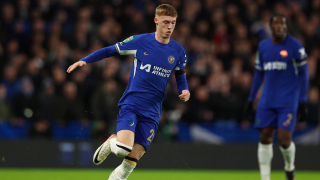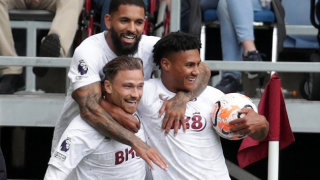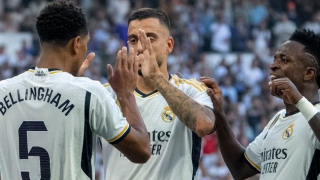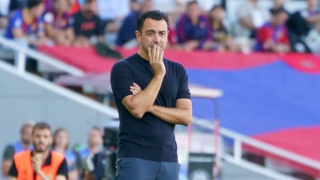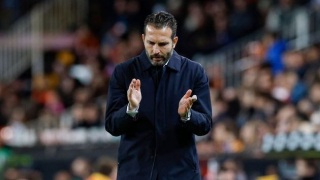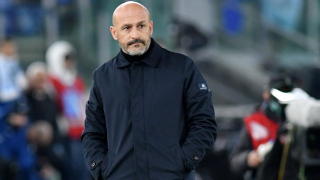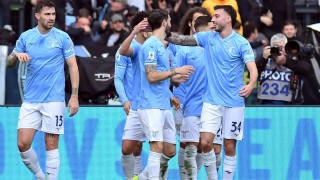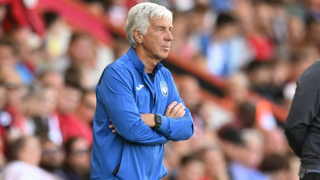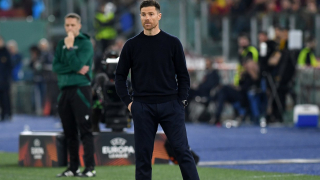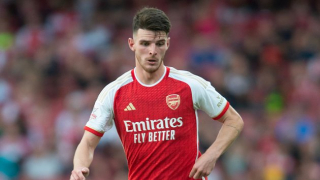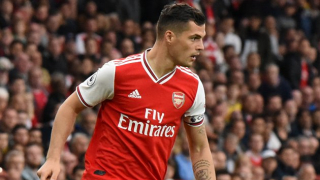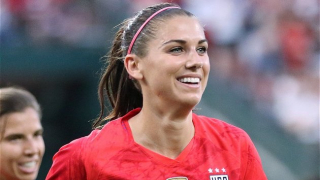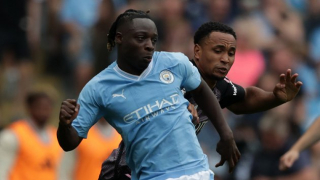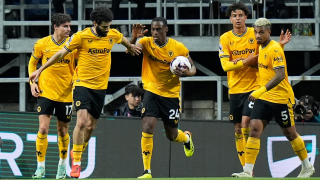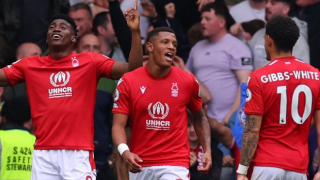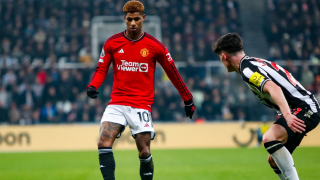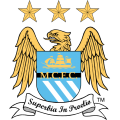In a game of controversial decisions, fierce rivalry and high stakes, Manchester City prevailed over their Manchester counterparts in Saturday's FA Cup final, winning 2-1.
A 14 second opener for City, followed by a controversial penalty decision allowing United to equalise in the first half, and finally a 51st minute volley from Ilkay Gundogan to score City's second and complete his brace marked the day's goalscoring moments.
This was the story of the game on paper, however I am going to take a deeper look at how Pep Guardiola managed to lead City to their second out of three possible trophies, on their road to the holy Treble. And then we will cover where United failed and why I believe Erik ten Hag got it wrong on the day.
Manchester City Tactical Success:
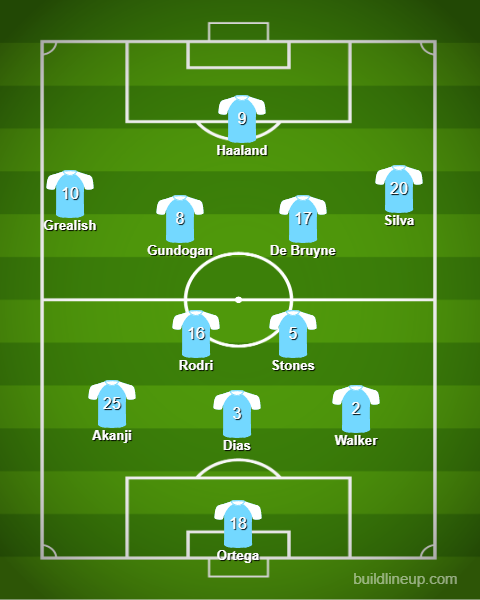
(Figure 1)
As you can see in figure 1, Pep kept with what has worked so well, his 3-2-5 system where John Stones joins Rodri in midfield and allows Kevin De Bruyne and Gundogan to push on and join the front five.
In this game. Gundogan and De Bruyne's roles were pivotal due to the usage of Erling Haaland's gravity and the rotations it caused.
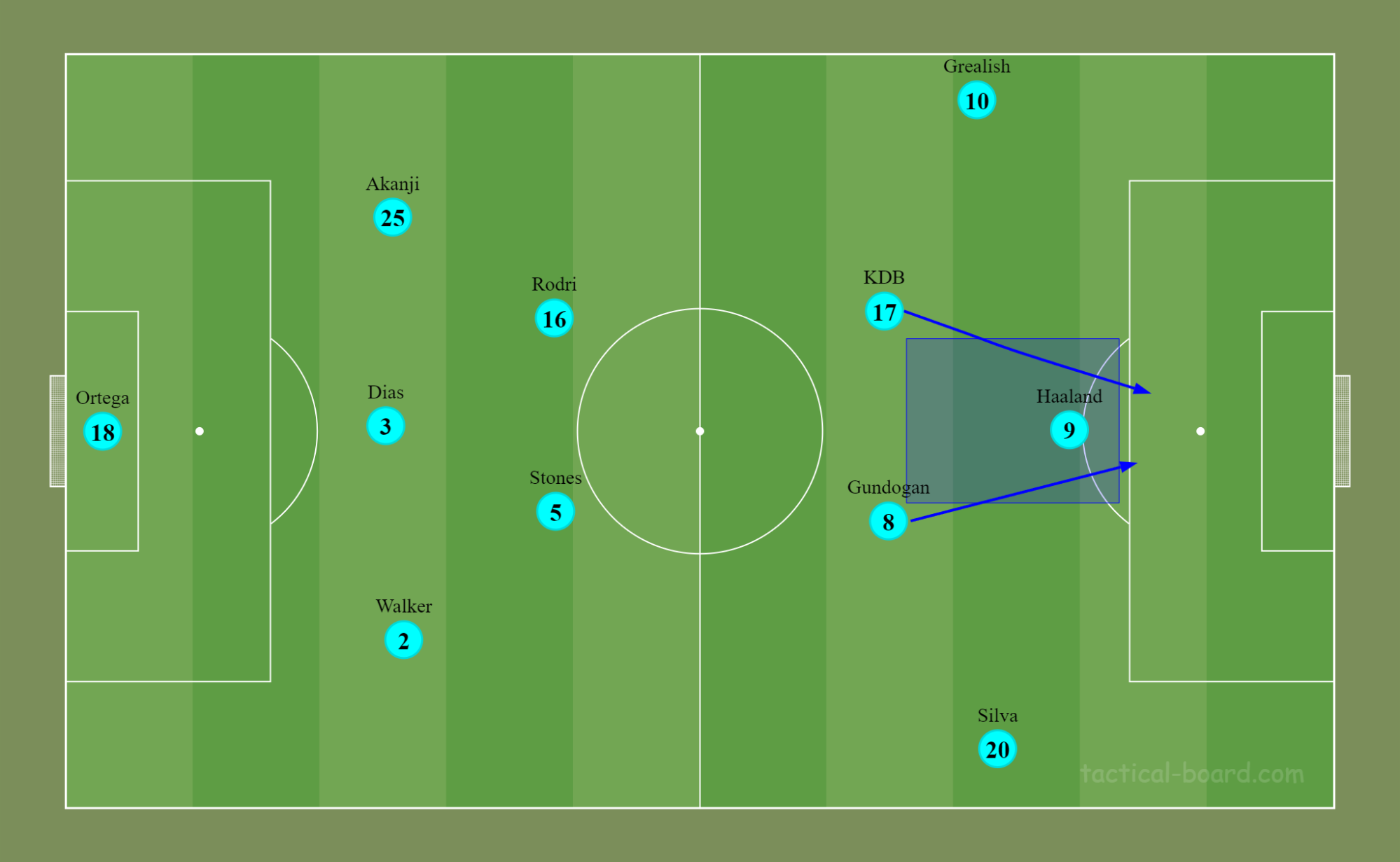
(Figure 2)
Figure 2 shows a visual representation of this. Haaland was offering the vertical first ball, challenging the two Manchester United central defenders and forcing them to follow him to attempt to win possession and stop Haaland. However this allowed Pep's two attacking 8s to make runs in behind the United defence and win the second balls.
Pep has managed to tweak his system, so the extra man in midfield (John Stones) still allows City to dictate the tempo of play and control the game, but also enables the two 8s to be free, to play close to Haaland and win second balls when City decide to go direct.
This makes them extremely dimensional as they have the ability to play through you from back to front, but to also go direct with the gravity and power of Haaland supported by KDB and Gundogan.

(Figure 3 - Images from Emirates FA Cup YouTube Channel)
In figure 3, you can see the first goal coming from this direct approach where Haaland drops deeper to win the initial header and flicks the ball into the space shown in the image on the left. This then allows the rotation of De Bruyne and Gundogan in behind Haaland, making them the two highest Manchester City players. This clears De Bruyne to win the second ball, falling to the feet of Gundogan who hits a beautiful volley to make it 1-0.
At first glance this goal looked uncharacteristic, however this is something Pep has been slowly building into his system, and this was used on numerous occasions in this game.
Manchester United Tactical Hampering:
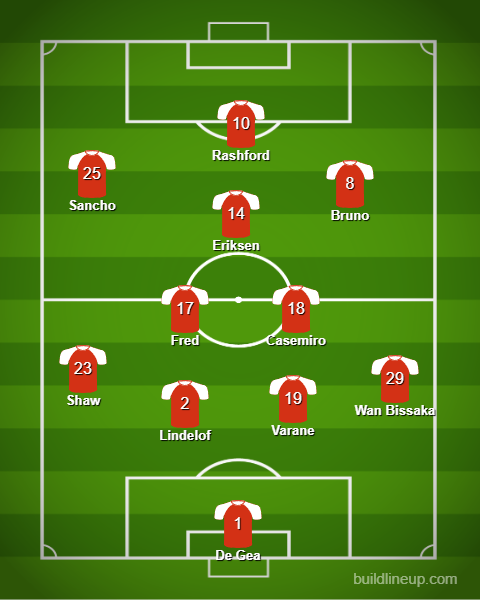
(Figure 4)
With a few key injuries such as Anthony Martial, Antony and Lisandro Martinez, Ten Hag opted for his usual 4-2-3-1 but with Bruno playing as a wide man, putting Marcus Rashford through the middle. The plan looked to be for Rashford to find positions between the central centre back (Ruben Dias) and one of the other two central defenders in Manchester City's 3-2-5 system (Kyle Walker or Manuel Akanji), to make runs between the two defenders and turn City around.
However this instead ended up with Rashford being isolated most of the time (represented in figure 5) , as well as Fernandes being minimised in his effectiveness from a wider position to his normal roaming 8/10 position.
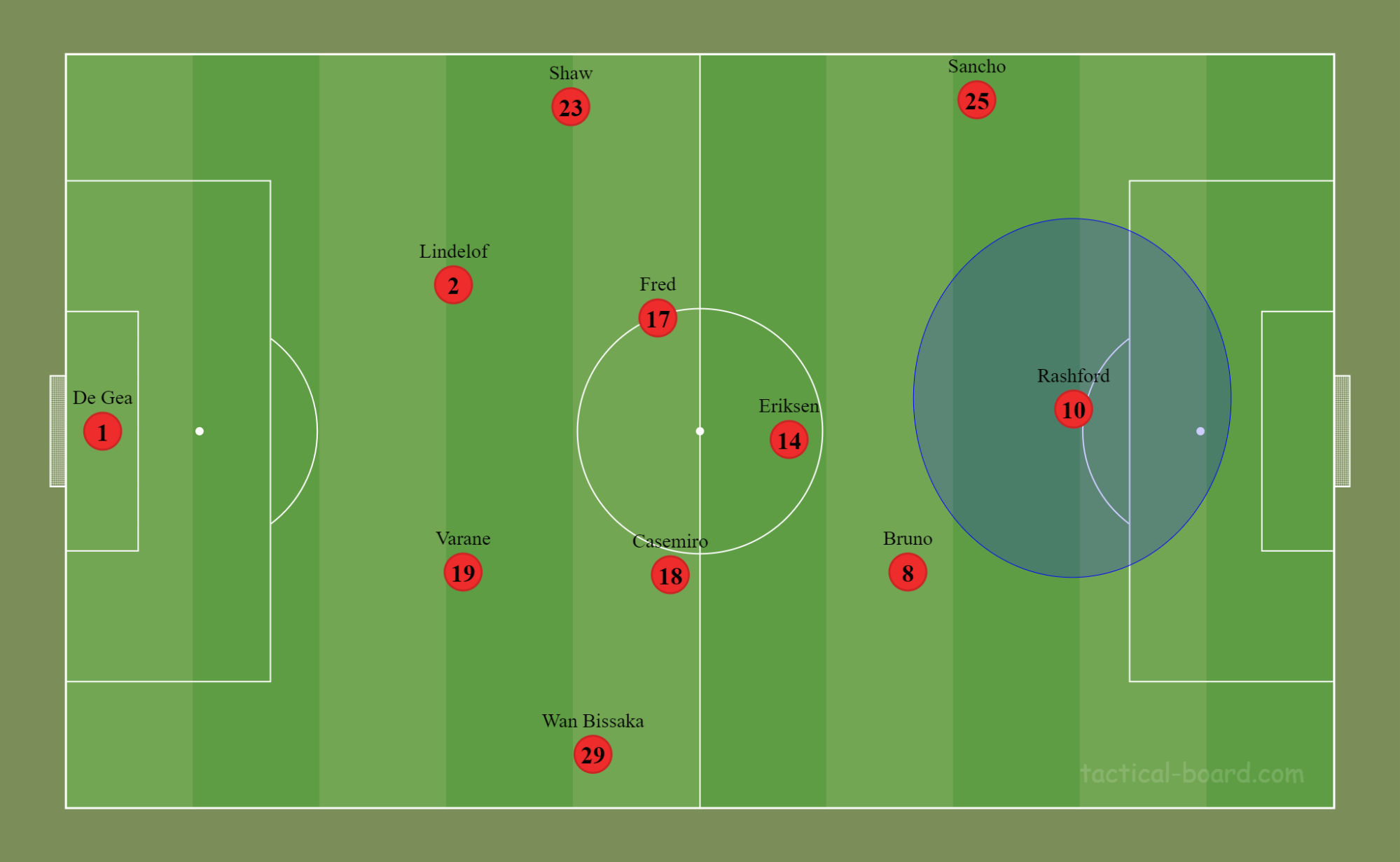
(Figure 5)
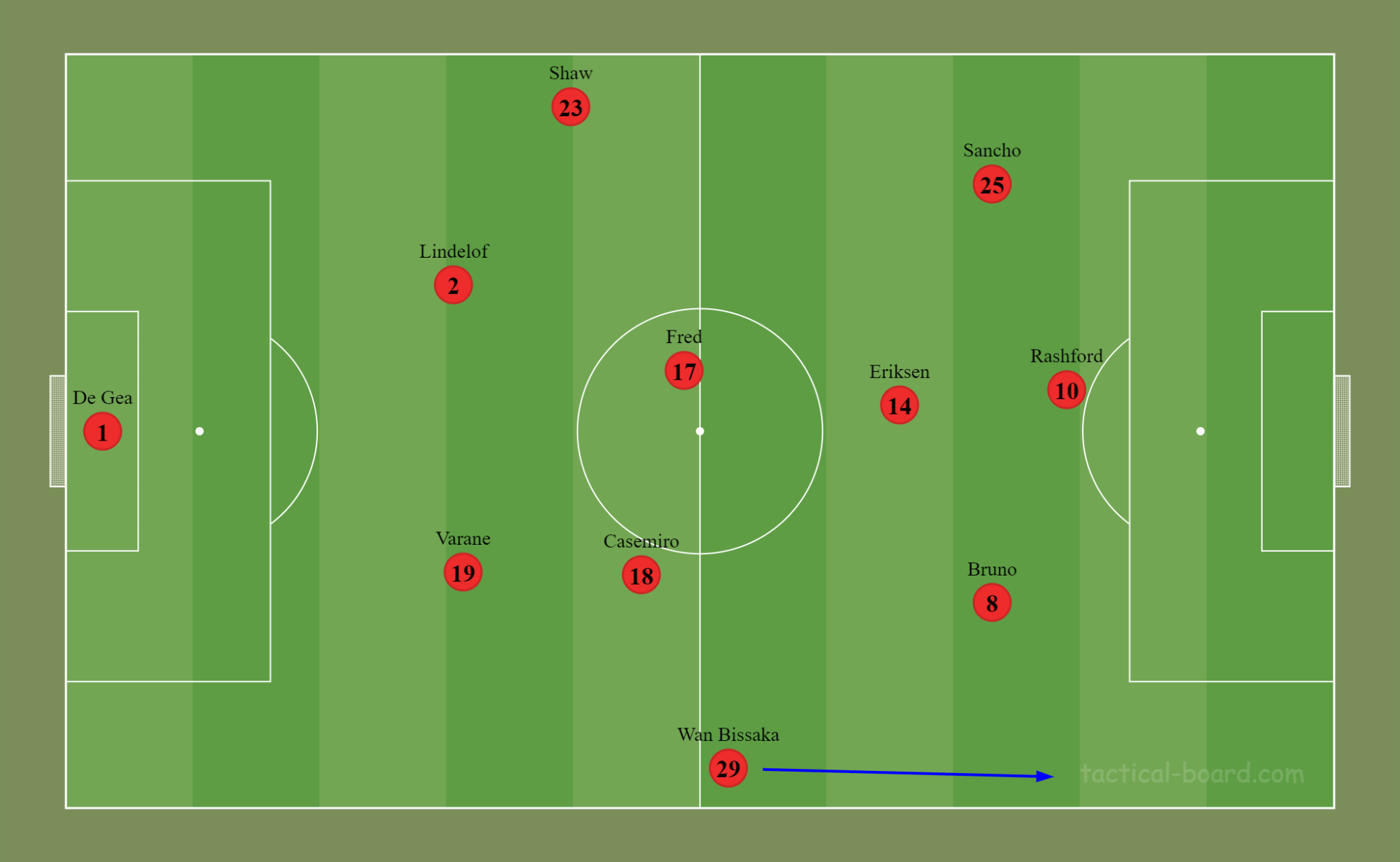
(Figure 6)
The space for Manchester United seemed to be on the outside of Fernandes on the right hand side, as he naturally drifted inside to get on the ball more, which then allowed Aaron Wan Bissaka to make runs beyond Fernandes and behind the left sided defender (Akanji).
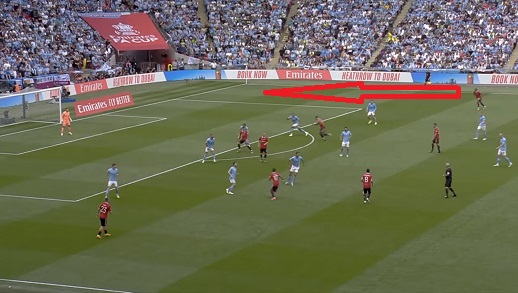
(Figure 7 - Image from Emirates FA Cup YouTube Channel)
The Manchester United penalty came from a darting Wan Bissaka run in behind Jack Grealish and Akanji, where Wan Bissaka won the header which bounced back onto the hand of Grealish and ended in a controversial penalty decision.
This space could have been better utilised with a natural 1v1 winger on the right side such as the injured Antony, which would have allowed United to target this space and area of the pitch and create more chances.
Starting with a natural striker such as Wout Weghorst and allowing Rashford and Jadon Sancho to play on the wings could have worked better for Ten Hag in maximising the qualities of these dynamic wingers and making the most of the space left behind the wide centre backs of Manchester City (especially on that right side).
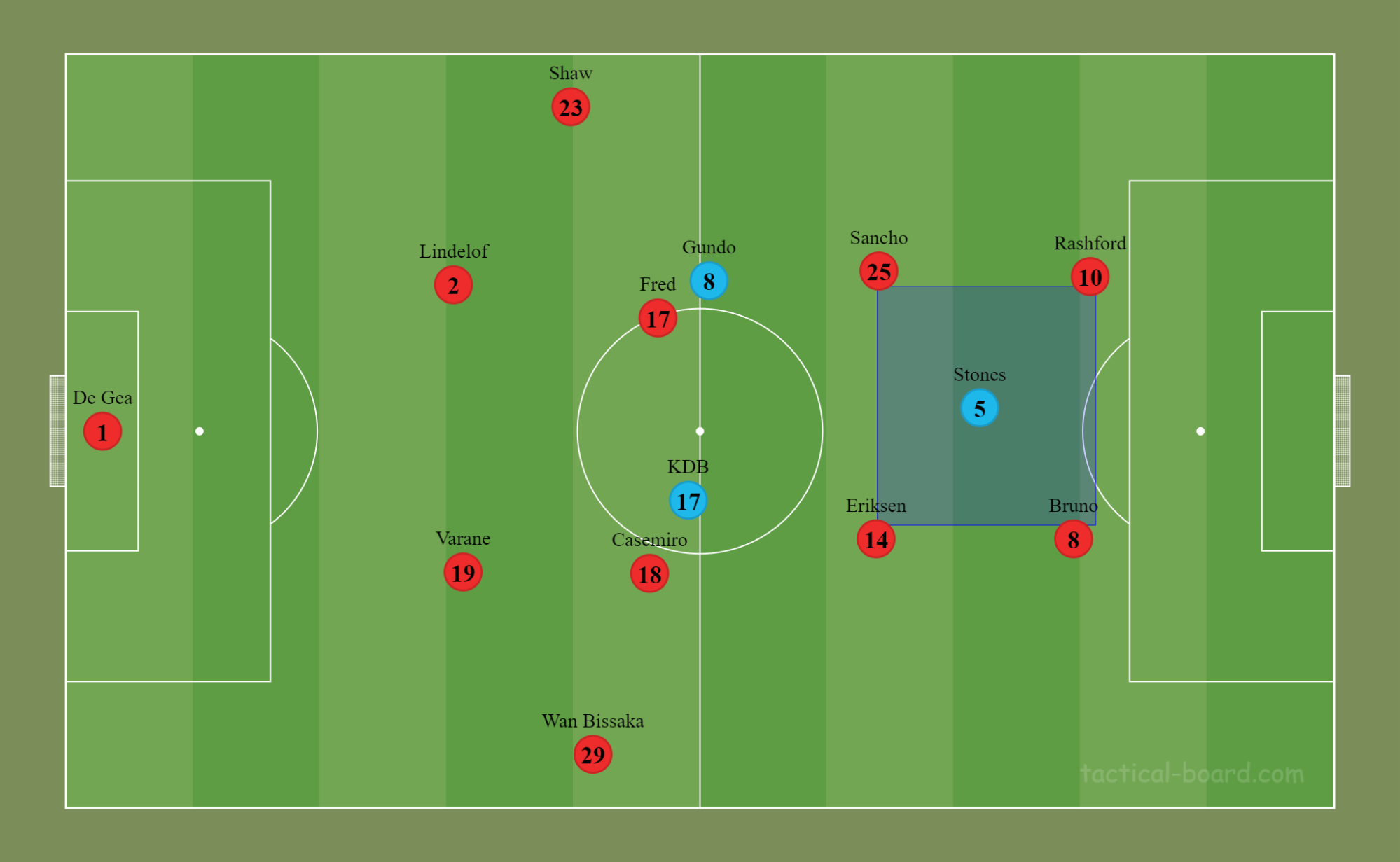
(Figure 8)
The last thing to highlight in Ten Hag's attempts to stifle City's build up play, was creating a box press with his front four, to surround the two City midfielders (Stones and Rodri) and cut off their passing lanes into progressive areas.
However the quality of Rodri and Stones prevailed, as they both picked up the ball seamlessly in the box press and either played out, or drove out depending on the situation of the press. This was the right method from Ten Hag to stop the two midfielders controlling the game, however a mixture of wrong personnel for United and the quality of the two City players meant this plan was easily bypassed throughout the game.

